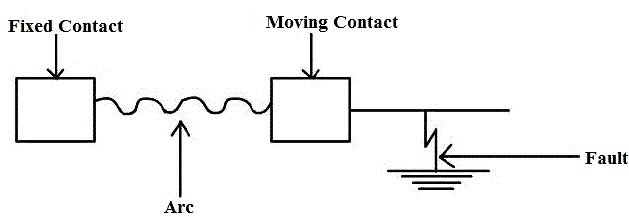Circuit breakers are essentially
Right Answer is:
Current carrying contacts called electrodes
SOLUTION
Circuit Breaker
Circuit breakers (CBs) are mechanical systems designed to close or open an electrical circuit under normal or abnormal conditions. A relay senses the abnormal condition and sends a tripping signal to the circuit breaker for operation. The maximum value of current that a circuit breaker can interrupt without any damage is known as rupturing or interrupting current. A circuit breaker has two contacts: fixed contact and moving contact. During normal conditions, the contacts are in the closed position, whereas during abnormal conditions the contacts move to interrupt the circuit that results in an arc between the contact, as shown in Figure The circuit breakers are rated in MVA, and heavy-duty circuit breakers interrupt several thousand amperes of high short circuit currents.
Arc Phenomenon
Electrodes are the current-carrying contacts in the circuit breaker. They remain closed under normal conditions and separate to interrupt the circuit during abnormal conditions. When the current-carrying contacts separate, an arc forms. When the electrodes move the area of contact decreases. The high magnitude fault current causes an increase in current density which in turn increases the temperature between electrodes. The heat between the contacts has the ability to strike the electrons from air molecules or ionize the air surrounding the electrodes. This avalanche of free electrons in the medium is sufficient to carry charges and results in arc strikes. The arc has a low resistance path; therefore the current in the circuit remains continuous as long as the arc is sustained.

